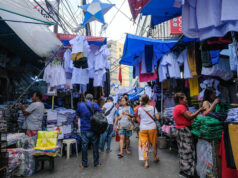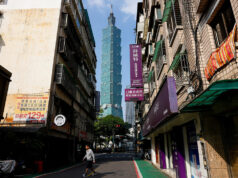NEDA: Six-month closure of Boracay to cost P1.96 billion
THE CLOSURE and rehabilitation of Boracay is seen to cost the economy some P1.96 billion in six months, the National Economic and Development Authority (NEDA) said Tuesday, Apr. 24.
But, “(i)n terms of the amount, the reduction in GDP (gross domestic product) itself will amount to around P980 million only, so it’s a small amount,” Socioeconomic Planning Secretary Ernesto M. Pernia told reporters Tuesday, Apr. 24 on the sidelines of the Development Budget Coordination Committee meeting Tuesday, Apr. 24.
Mr. Pernia clarified that the P980 million is what the economy would lose per quarter. If the rehabilitation of Boracay would extend up to six months, it would cause the economy to lose P1.96 billion.
But he also said there would be tourists and businesses transferring to other tourist spots which would temper the loss from Boracay’s closure.
“Boracay and Aklan, they will suffer and also their growth rates will be trimmed…. But then on the other hand there will be other areas in the Visayas earning some increase in growth rates (and) also Luzon and Mindanao will have some increase,” Mr. Pernia said.
“I would assume closer to 70 to 75% of those who used to go to Boracay will go to other tourist destinations,” he added.
The overall impact on the economy would result in a 0.1% deduction. The economy grew 6.7% in 2017.
“We are motivated to work harder especially the DoT (Department of Tourism) to step up its effort to attract more tourists in the country to other destinations and advertise other destinations,” said Mr. Pernia.
The NEDA has said some workers who will lose their jobs as a result of the closure may participate in the government’s clean-up drive.
Also on Tuesday, Presidential Spokesperson Harry L. Roque, Jr. said President Rodrigo R. Duterte may sign the executive order (EO) placing Boracay Island under a state of calamity before he leaves for Singapore to attend the 32nd Association of Southeast Asian Nations (ASEAN) Summit on April 27 to 28.
“I’m sure he’ll have to sign [it] before leaving for Singapore, because [it] is the first day that Boracay will be closed to tourists,” Mr. Roque said in an interview with CNN.
Yet in his briefing at the Palace, Mr. Roque gave no details even when repeatedly asked.
“Well, wala pa (none yet). But come on, it’s just a matter of the President signing it. Okay? The people have been told, they know that there will be a closure; there will be a declaration of state of natural calamity. It’s just a matter of the President signing the documents, and it can be signed any time now. Okay?” Mr. Roque told reporters.
Also in his television interview, Mr. Roque said the state of proclamation is only needed for purposes of fast-tracking procurement.
He added: “But government officials are already at it. In fact, we had a final inter-agency Cabinet level meeting to spell out the different obligations of the different departments. The DoLE (Department of Labor and Employment) and DSWD (Department of Social Welfare and Development) will be at the forefront of providing stop gap measures as far as loss of income is concerned; DENR (Department of Environment and Natural Resources) of course will spearhead the master plan of rehabilitating the island; Tourism is already initiating the task of coordinating with airlines and ensuring the tourists will come back after the closure, things like that.”
The spokesman also pointed out that he himself has asked the Boracay inter-agency task force to ease media restrictions in the island.
For its part, the Department of Environment and Natural Resources (DENR) will be updating the master plan on Boracay to include neighboring islands around Northern Aklan.
In a statement on Tuesday, Environment Secretary Roy A. Cimatu said the revision of the master plan, which will be undertaken during the six month-long closure, will be done to boost tourism revenues.
“Within that period, we intend to put in place what we might call the ‘First aid’ solution to Boracay’s problems: […] putting the sewage and solid waste systems in place; demolish illegal structures, whether big or small — in the foreshore, on wetlands, in forest lands or even within road easements,” he said.
“[We will also] set up rules and regulations to keep Boracay safe, including the use of jetty ports, vehicles and other means of transport, the entry and exit of people and the like. And of course, the governance of the place.”
The master plan, which initially only covered Boracay island, will now cover Carabao, Caticlan, Malay and possibly the island province of Romblon. — Elijah Joseph C. Tubayan, Arjay L. Balinbin, and Anna Gabriela A. Mogato



